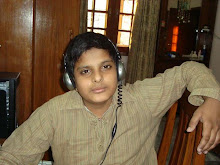ONLY SHIPS
Every day, huge ships made of steel cross the oceans and travel the world’s great rivers and lakes. Powerful engines turn propellers that make the ships go. Ships transport people and goods to all parts of the world.
Ships are very important to the way we live. Ships carry oil that is made into gasoline for our cars. They bring in much of the food we eat and the clothes we wear. They carry computers, furniture, and televisions for our homes. Look around you. Many of the things you see traveled to where you are on a ship.
THE PARTS OF A SHIP
Ships may look very different from each other, but they all have the same basic parts. All ships float in water. The part that floats is called the hull. Inside the hull there are decks. Decks are like the floors in a building. You can go up and down from one deck to another.
HOW SHIPS MOVE THROUGH WATER
The front of a ship is called the bow. The back is called the stern. Attached to the stern is a wooden or metal plate called the rudder. A steering wheel or a stick called a tiller makes the rudder swing back and forth. Moving the rudder makes the ship turn.
Some ships use sails to move. Sails are big sheets of fabric. The sails hang from a long pole called a mast. Ships with sails use the energy of blowing wind to move through the water.
Most modern ships have engines that burn fuel. Engines make power to turn propellers at the stern. Propellers make ships go through the water.
THE AGE OF SAILING SHIPS
By about 5,000 years ago, the Egyptians were building some of the first sailing ships. They made them by tying bundles of reeds to a wooden frame. The ships carried cargo and had one or two square sails.
The best ancient shipbuilders were the Phoenicians. They made cargo ships and warships called galleys. Galleys had sails and many oars.
The ancient Greeks fought with the Phoenicians. The Greeks added a big spike to the front of their galleys. They used the spike to ram into Phoenician ships.
In China and other parts of Asia, builders made cargo ships called junks. Junks had a flat bottom, a square bow, and a rudder. The sails had pieces of bamboo in them to make them stiffer.
Arab builders began to use triangular sails called lateens. A ship with lateen sails could sail almost directly into the wind.
In the 1200s, Europeans began building ships with three masts and many square and triangular sails. These ships were called full-rigged ships, or square-riggers. Starting in the 1400s, European explorers set off on voyages in these ships to faraway parts of the world. Christopher Columbus, Vasco da Gama, and other explorers used square-rigged ships.
In the 1600s, the Spanish built huge ships called galleons. In the 1700s and 1800s, the British built big sailing ships that they used to fight sea battles.
The fastest sailing cargo ships were the clipper ships of the mid-1800s. They had sleek, narrow hulls and as many as six sails on each tall mast.
MODERN SHIPS
During the 1800s, iron and steel hulls replaced wooden hulls. New types of engines were also developed. For the first time, ships could move without wind or human-powered oars. Steam engines fueled by coal replaced sails.
Later, engines that used oil as a fuel replaced steam engines. Today, most ships have steel hulls and are driven by powerful motors that turn big propellers.
CARGO SHIPS
There are many kinds of cargo ships. Container ships carry cargo in huge boxes the size of railroad cars. Oil tankers and supertankers carry oil in their hulls. Freighters transport tons of coal, grain, and ore.
PASSENGER SHIPS
There were no passenger ships in ancient times. Travelers had to look for space on a cargo ship. Most passengers slept wherever they could find a spot on the deck. After Europeans learned about the Americas and Australia, settlers wanted to move to these new lands. Full-rigged ships carried passengers along with cargo. It was not very comfortable traveling on those wooden sailing ships.
By the mid-1800s, shipping companies began to offer regular passenger service. Companies competed with each other for passengers. They built luxurious ocean liners that could cross the Atlantic Ocean in just a few days.
In the 1950s, airplanes became more popular than ships for traveling over oceans. Today, most passenger ships are cruise ships. You can take a vacation aboard big cruise ships.
NAVY SHIPS
For many years, battleships were the biggest warships. They were used in World War I and World War II. Today, aircraft carriers are the biggest warships. The largest carriers can hold 85 airplanes. They have crews of more than 5,500 people.
Modern navies have many other kinds of ships. Submarines are ships that can dive underwater. Some submarines carry missiles to attack enemy ships. Cruisers escort and defend aircraft carriers from attack by planes and submarines. Destroyers defend carriers and merchant ships from air and submarine attacks. Frigates escort and defend ships from submarines.
THE NEWEST SHIPS
Shipbuilders are looking for ways to build big ships that go faster and carry more cargo. They are looking for new hull shapes that go faster in the water. They are also looking for better engines. Water jet engines may replace propellers. A jet boat engine works by shooting out water, just as a jet plane engine shoots out air.
PICTURES OF SHIP:

















































